Balsam belongs to family Balsaminaceae. There are 850 species of this plant. They are annuals found in tropical and temperate regions of the world.
Some of the other common names of Balsam are Rose Balsam, Spotted snapweed. In Kannada it is known as Karana kundala. Balsam grows in the wild in the Western Ghats during monsoon. Just after monsoon in Satara, large area of land is covered with Balsam blooms and is a wonderful sight to behold.
Picture – Wild Rosemary Leaved Balsam
I remember using this plant for experiment in school to depict the transportation of water to the different parts of the plants. We wood pluck a plant with roots and stick them in a jar filled with colored water and leave it aside overnight. The next day, the plant would be colored with the color used in the water!
They are upright, sparsely-branched plants that grow to a height of 24 inches. The stems are thick, transparent and juicy. The leaves are light green and spiked.
Flowers can be single or double and can be as wide as 2 inches with a spur at the back. The flowers bloom from the leaf axis near the stem. The color range of Balsam is wide and they bloom in bi-color too.
Propagation:
You can grow Balsam by seeds in pots and beds. Seeds can be collected very easily. If you see the seeds turn black in the transparent capsule, then it is ready to sow.
As soon as you touch the capsule it will pop, so ensure that you hold the stem of the capsule and store it in a paper bag. Water the plants twice a day during summer.
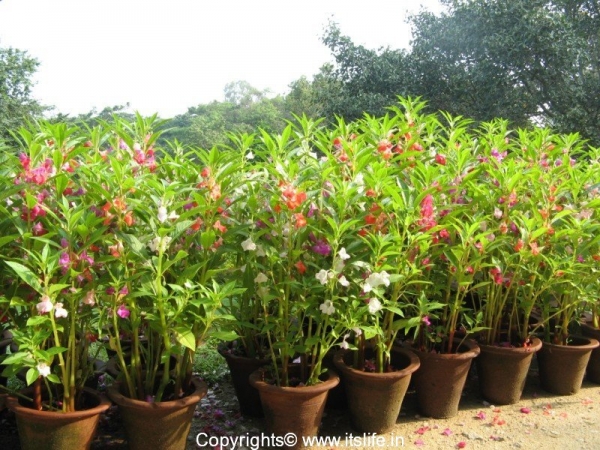
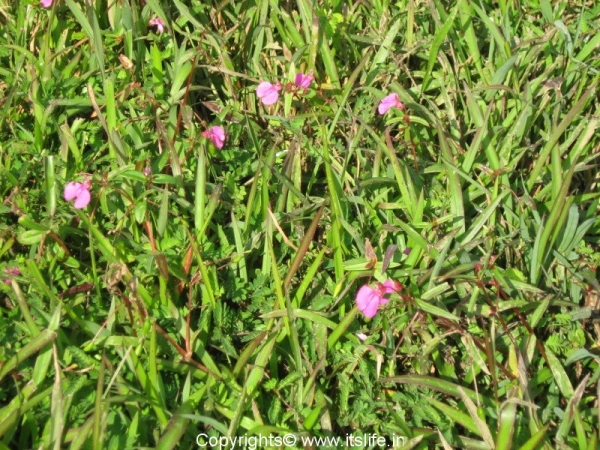
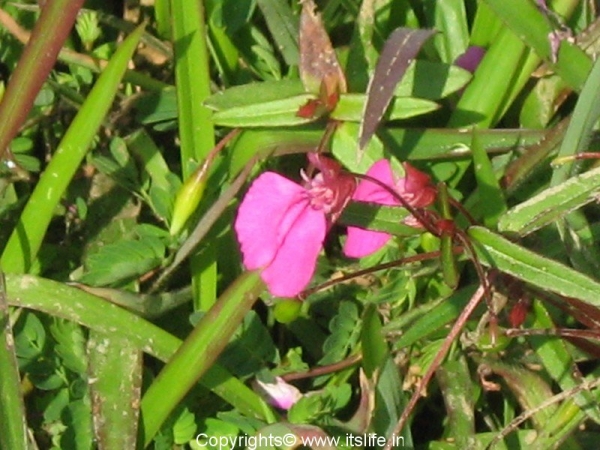
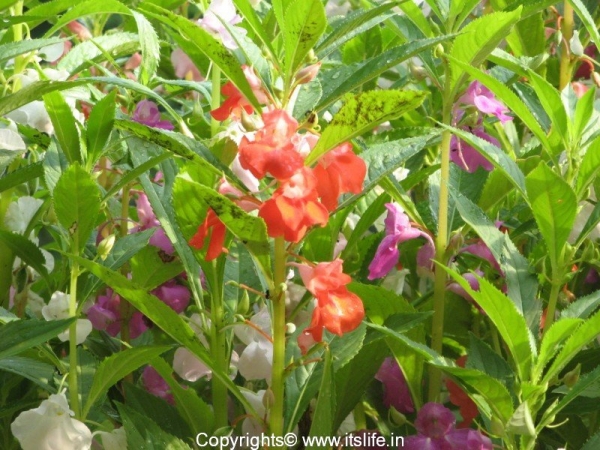
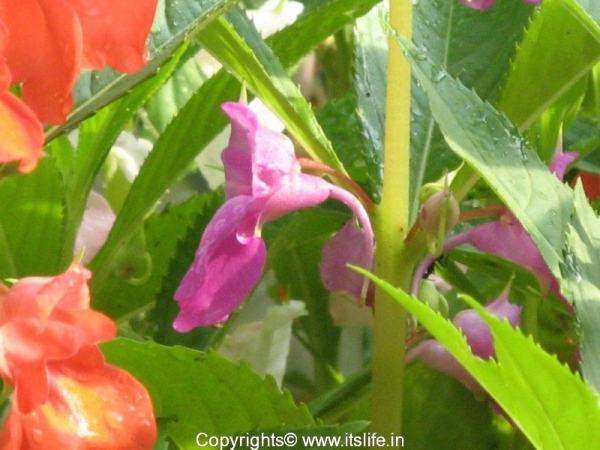
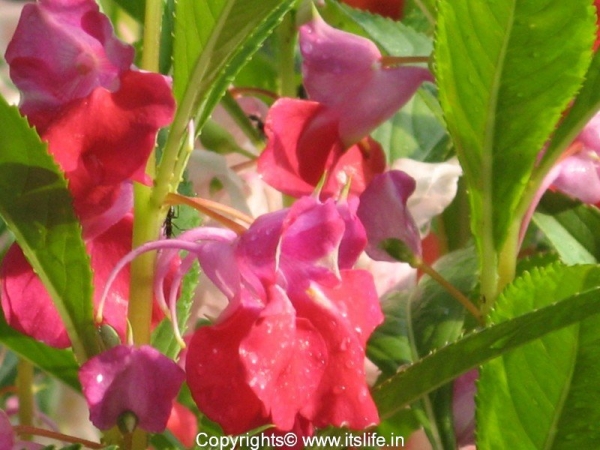

Karna kundala Balsam flower is very good useful in ear diseases